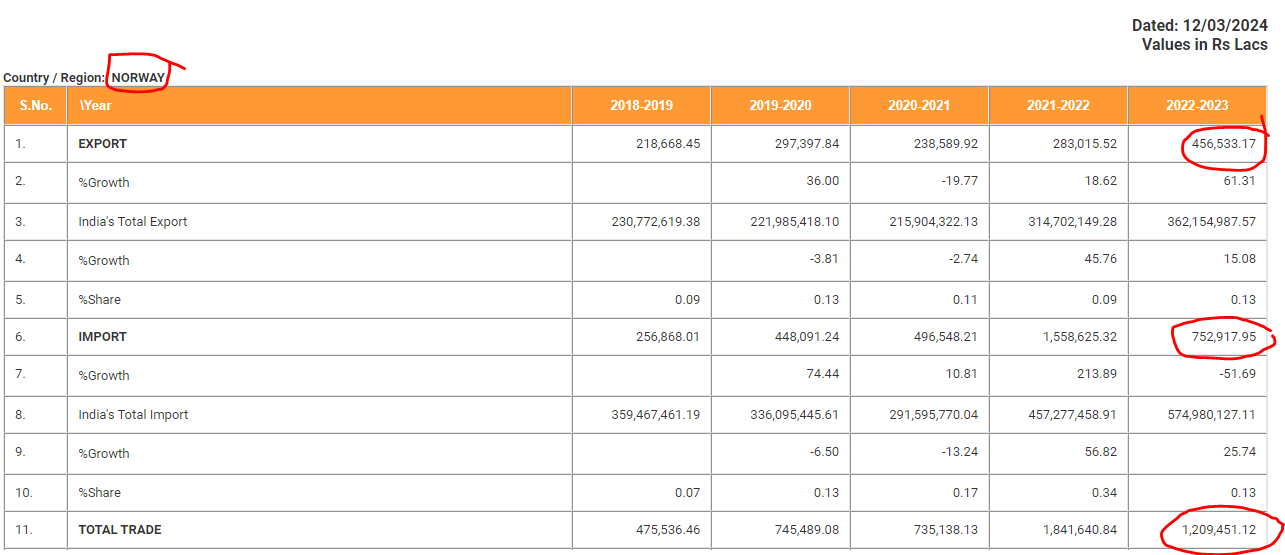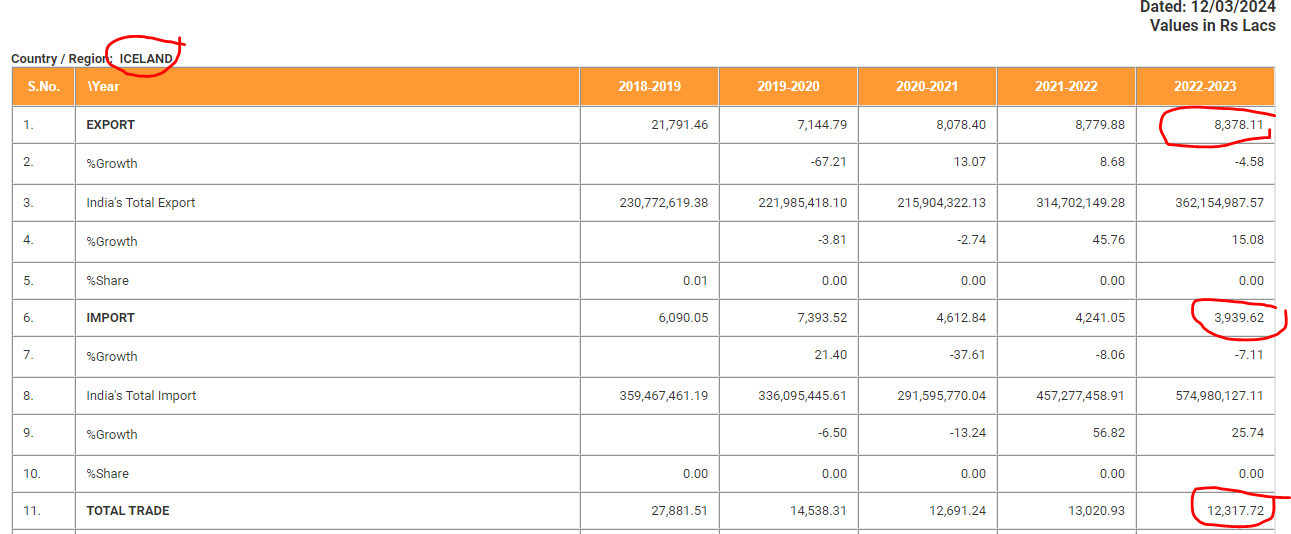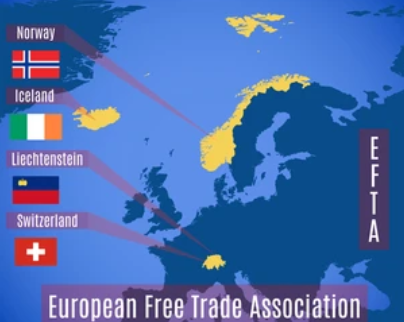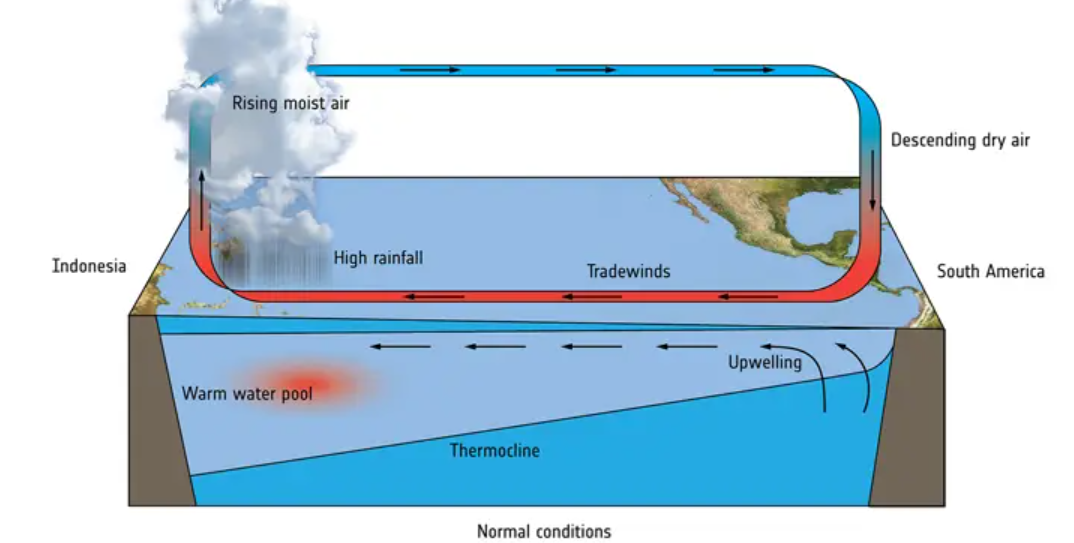Goaltide Daily Current Affairs 2024
Current Affair 1:
India Signs Free Trade Agreement with EFTA Bloc
India and the four-nation European bloc EFTA signed a free trade agreement recently.
The European Free Trade Association (EFTA) members are Iceland, Liechtenstein, Norway, and Switzerland.

Other members: Switzerland, Norway, United Kingdom, Sweden, Denmark, Austria, Portugal.
Meanwhile, in 1973, Denmark and the UK joined the EU; in 1986, Portugal joined the EU, and, in 1995, Austria, Finland and Sweden joined the EU, consequently leaving EFTA. EFTA currently has 4 member countries: Iceland, Liechtenstein, Norway and Switzerland.

I have provided data for all four below.






Agreement ka main point which you need to know:

The agreement also said that the EFTA states “shall aim to facilitate the generation of 1 million jobs within 15 years in India from the entry into force of this agreement.


Current Affair 2:
2023-24 El Niño – One of the Strongest on Record
The 2023-24 El Niño, one of the top five strongest on record, is weakening and there is a high chance we’ll experience normal conditions in April-June this year, said the World Meteorological Organization (WMO) on 5 March.
What is El Niño
The El Niño is a climate pattern occurring in the Pacific Ocean in which trade winds, that take warm water from South America westwards to Asia weaken. This weakening results in above-average high surface temperatures of the Pacific Ocean and has global impacts, with the main ones focused on countries near the tropics, including Latin America, South Africa, and South and Southeast Asia.
El Niño is part of the larger El Niño Southern-Oscillation (ENSO) cycle which has three phases — the El Niño, the La Niña and a neutral phase.
EL NINO: El Niño is the warming phase of the waters in the eastern Pacific, off the coast of South America.
LA NINA: Then, La Niña is the cooling phase.
Normal Conditions
El Niño takes place in the Pacific Ocean near the equator. In normal conditions, Trade Winds blow from east to west. These winds push warm water like a conveyor belt to the coast of Asia and Australia. Then, warm water pools in the west of the Pacific Ocean. This causes the thermocline (top-to-bottom ocean temperature gradient) to deepen.

El Niño
Every 3-5 years, El Niño is triggered by a weakening of west-blowing Trade Winds. As winds weaken, it results in less warm water to the west. Consequently, there is also less cold upwelling water off the coast of the Americas.

So, there’s less push of warm surface water to the west. On top of that, there’s less upwelling on the eastern side. As a result, warm water piles up centrally in the Pacific Ocean disrupting the normal temperature balance between the eastern and western Pacific.
During El Niño, the increased water temperature drives rainfall. If you have concentrations of heat, it forms pressure systems that build storms. This is why the equatorial Pacific has increased rainfall and winds. Then, these conditions impact global weather conditions in other regions around the world.
La Niña
After El Niño reverses back to normal conditions, it can dip into its counterpart La Niña. La Niña is basically El Niño in reverse.
Instead of a weakening of Trade Winds, La Niña experiences a strengthening in equatorial air circulation. La Niña pushes warm water even further west. Then, it increases the upwelling of colder water in the eastern Pacific decreasing temperatures there.
Similar to El Niño, La Niña can have a major impact on global weather as well. La Niña tends to have the reverse effects of El Niño. For example, you get drought conditions in countries near the eastern Pacific because the cooler water produces less rain.
Current Affair 3:
France Enshrines the Right to Abortion in Its Constitution
News:

In a historic move, France became the first country in the world to enshrine the right to abortion in its constitution on March 4, 2024.
Stance of India:

Current Affair 4:
Green Tug Transition Programme (GTTP)
News:

In March 2023, the Union Minister of Ports, Shipping & Waterways launched the Green Tug Transition Programme (GTTP).
At least, 50% of all the Tugs are likely to be converted into Green Tugs by 2030, which will considerably reduce emission as the country move towards achieving sustainable development.
Green Tug Transition Programme
A tug or a tugboat is a boat that aids in the mooring or berthing operation of a ship by towing or pushing the vessel towards the port. Under the Green Tug Transition Programme, the tugboats used in ports would be converted to ‘green tugs’ that run on non-fossil fuels such as methanol, hydrogen or ammonia.
Aim of GTTP: To become a ‘Global Hub for Green Ship’ building by 2030 and reduce emissions as the country moves towards achieving sustainable development.
Green Tug Transition Programme Significance:
- It will help in achieving multiple objectives such as ‘make in India’, greater business opportunities to become carbon neutral by 2070 and a greener environment.
- It will also help in achieving the UN’s SDG 14 to sustainably manage and protect marine & coastal ecosystems from pollution, conservation & sustainable use of ocean-based resources.



